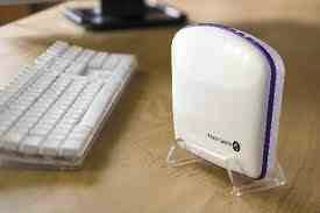The Federal Communications Commission’s move to free up spectrum in the 3.5 GHz band for small cells and other wireless broadband uses took another step as the agency solidified those efforts in a further notice of proposed rulemaking.
Under the proposal, the FCC is looking to create the Citizen Broadband Radio Service that will include 150 megahertz of spectrum between the 3550-3700 MHz bands. The FNPRM looks to provide a “three-tiered access and sharing model comprised of federal and non-federal incumbents, priority access licensees and general authorized access users.” Access would be under a flexible model taking advantage of technology to reduce interference between users.
“Federal and non-federal incumbents would be protected from harmful interference from [CBRS] users,” the FCC explained. “Targeted priority access licenses would be made available for a variety of uses, including mobile broadband. General authorized access use would be permitted in a reserved amount of spectrum and on an opportunistic basis for a variety of consumer or business-oriented purposes, including advanced home wireless networking.”
The 3.5 GHz band is now in the hands of the Department of Defense for use in certain radar installations, as well as by “non-federal fixed satellite service earth stations for receive-only, space-to-earth operations and feeder links.” The somewhat limited propagation characteristics of the 3.5 GHz band are thought to be a good fit for the dense deployment plans for small cells and would likely limit interference with current users.
The FNPRM will build on a previously announced notice of proposed rulemaking released in late 2012. That initial proposal looked at whether it will be feasible to open up approximately 100 megahertz of spectrum in the 3550-3650 MHz bands for small cell technologies, possibly on an unlicensed basis. At that time, the FCC said it was looking at potentially extending the spectrum allocation an additional 50 megahertz up to the 3700 MHz band, which is currently used by the federal government in just a few locations.
The FCC earlier this year conducted a workshop to look at “technical requirements, architecture and operational parameters of the proposed spectrum access system (SAS) for the 3550-3650 MHz band (3.5 GHz band).” The SAS would operate similar to the TV White Spaces database in governing use of the 3.5 GHZ band.
“The 3.5 GHz band provides a real-life opportunity to apply some bold thinking about receiver performance. In parallel to our formal rulemaking, I expect that a multi-stakeholder group will be convened to explore ways to drive not only efficient transmission, but also efficient reception, in the band,” noted FCC Chairman Tom Wheeler earlier this year at an event.
Despite the continued push, the FCC remains cautious on the proposal.
“The proposal is just that, a proposal,” explained John Leibovitz, deputy chief of the FCC’s Wireless Telecommunications Bureau and special advisor to the Chairman for Spectrum Policy. “The commission established a healthy comment cycle to allow for a spirited discussion of the many technical and policy details in the proposal. We are, however, reaching the end of this first chapter in the story of the 3.5 GHz band. We hope that on the basis of this discussion in response to the proposal the Commission will be able to establish the new [CBRS] in the rule books. Then the real work can begin, as the private sector invests in technology and networks that bring the service to life.”
Bored? Why not follow me on Twitter?

